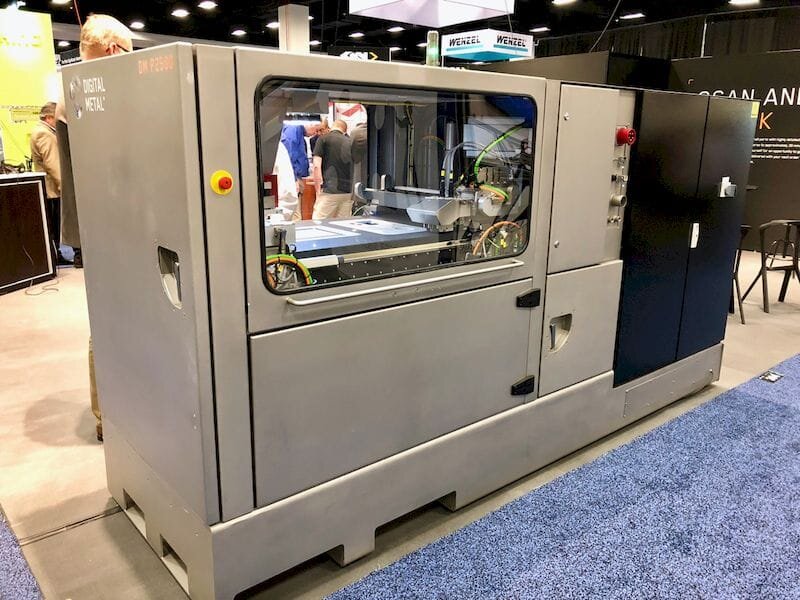
Digital Metal announced a new “digital platform interface” that should allow their equipment to be used for major production applications.
The Swedish company, owned by Höganäs AB, produces a binder jet system capable of 3D printing incredibly detailed small metal parts. The accuracy and resolution of their DM P2500 is quite astonishing, as you can see in this image of a bolt:
Their systems have been used for a variety of metal production applications, including parts for wristwatches and other jewelry items.
Recently the company made three announcements that, in retrospect, make much more sense with their latest news on the digital platform interface:
- They tripled the speed of their DM P2500 system
- They added copper material to the DM P2500’s certified list
- They launched a de-powdering system, the DPS 1000
Now they’re launching a digital interface platform, DMS-LNX 1.0.
This is actually software that greatly assists executing the workflow necessary to produce parts from the DM P2500. Digital Metal explains:
“Digital Metal has launched the DMS-LNX 1.0 Control Panel Interface, taking the next step toward fully-automated, No-Hands Production, capable of providing an immediate, comprehensive overview of the printing process.
DMS-LNX 1.0 was co-developed with automation partner Siemens, based on their MindSphere IoT platform. The system provides a complete overview of ongoing printing processes, with the ability to review specific details and receive alerts and prompts.”
Digital Metal’s CEO, Christian Lönne said:
“Producing millions of parts in-house has taught us a lot about this process. It became clear to us early on that successfully industrializing metal binder jetting is not just about the printer, but also about automating all the process steps.”
Let’s put these recent announcements together.
We have a much faster system that can use a variety of popular metal materials, an automated post processing system, and now a way to streamline the workflow to operate it.
To me, that equation sounds a lot like Digital Metal is seeking to rapidly expand the use of their technology in manufacturing environments. All of these announcements, aside from the material announcement, are about part throughput, which is the key to manufacturing.
The copper material simply enables more applications, and thus grows the market available to the DM P2500.
This series of announcements is similar to those we’ve all heard recently from other companies. The secret is out: manufacturers will soon be looking for vastly larger capacities for AM, and most 3D printer manufacturers are positioning to take advantage of that demand.
Digital Metal is apparently one of them.
Via Digital Metal
